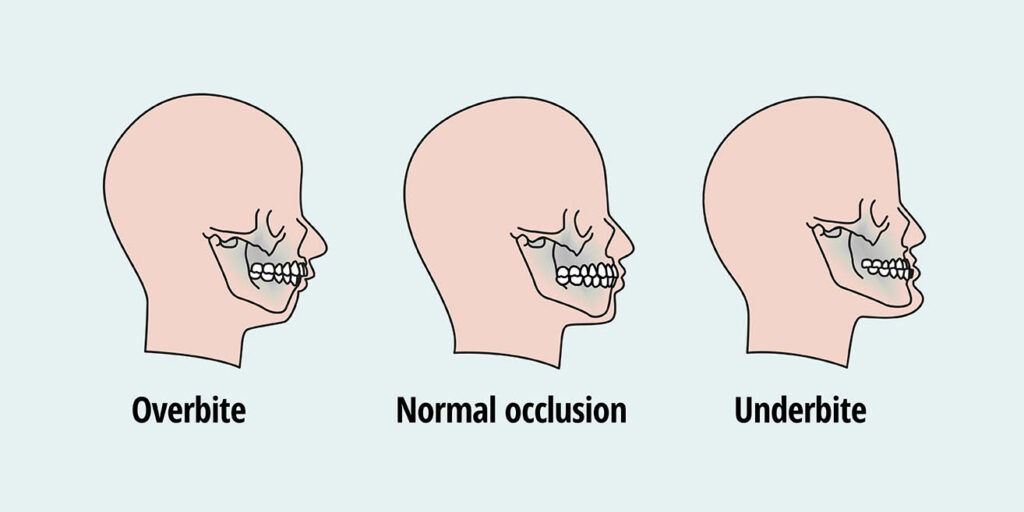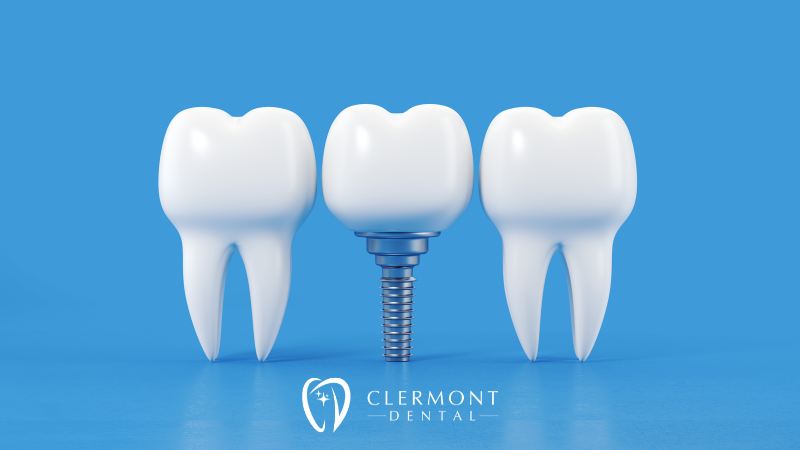Have you ever wondered about the alignment of your teeth and its impact on your oral health? The positioning of your teeth plays a significant role in both aesthetics and functionality. In this blog post, we will explore three common dental issues: overbite, underbite, and crossbite, and shed light on the importance of addressing these conditions.
The Basics of Teeth Positioning
Before diving into specific dental conditions, let’s first understand the concept of dental occlusion. Dental occlusion refers to how the upper and lower teeth align when the jaw is closed. Ideally, the upper teeth should slightly overlap the lower teeth. This alignment allows for proper functioning during activities such as chewing and speaking.
However, sometimes the teeth don’t align correctly, resulting in various bite problems. These misalignments can cause more than just cosmetic issues; they can affect your overall oral health. Let’s explore each condition in more detail:

1. Overbite
An overbite, also known as a deep bite, occurs when the upper front teeth significantly overlap the lower front teeth when the jaw is closed. In an ideal bite, only a small portion of the lower teeth should be concealed by the upper teeth. However, in individuals with an overbite, the overlap is more pronounced.
Causes and Implications of Overbite
Overbites can be caused by several factors, including genetics, thumb-sucking habits during childhood, tongue thrusting, or prolonged use of a pacifier. If left unaddressed, an overbite can have several implications:
- Aesthetic Concerns: An overbite can affect the appearance of your smile, making the upper front teeth more prominent. This can lead to self-consciousness and a negative impact on self-esteem.
- Oral Health Issues: Overbites can increase the risk of tooth decay and gum disease. The misalignment can make it challenging to properly clean your teeth, as some areas become more difficult to reach with a toothbrush or floss.
- Speech and Chewing Difficulties: Severe overbites can affect speech clarity and make it harder to pronounce certain sounds. Additionally, bite problems can lead to inefficient chewing, which can impact digestion and overall nutrition.
2. Underbite
An underbite is the opposite of an overbite – it occurs when the lower front teeth protrude in front of the upper front teeth when the jaws are closed. Ideally, the upper front teeth should overlap the lower teeth, even if it’s just a slight overlap.

Causes and Implications of Underbite
Underbites can be caused by factors such as genetics, jaw misalignments, thumb-sucking, or prolonged use of a bottle or pacifier. Let’s explore the implications of an underbite:
- Aesthetic Concerns: An underbite can affect the symmetry and balance of your face, leading to an asymmetrical appearance. This can impact self-confidence and how you perceive your smile.
- Temporomandibular Joint Disorders (TMD): Underbites can strain the jaw joint, which may lead to temporomandibular joint disorders. TMD can cause jaw pain, clicking or popping sounds, and restricted jaw movement.
- Difficulty Speaking and Chewing: Similar to overbites, underbites can affect speech and chewing efficiency. Pronouncing certain sounds may become more challenging, and proper chewing may be compromised.
3. Crossbite
A crossbite is a lateral misalignment where either one or multiple upper teeth sit inside the lower teeth when the jaws are closed. This can occur on one side of the mouth (unilateral crossbite) or in the center (anterior crossbite).
Causes and Implications of Crossbite
Crossbites can occur due to genetic factors or habits like extended bottle feeding, thumb-sucking, or mouth breathing. Here are some implications of a crossbite:
- Uneven Tooth Wear: Crossbites can lead to uneven wear on the teeth, increasing the risk of tooth fractures and premature wearing of the enamel.
- Gum Disease and Tooth Decay: The misalignment of teeth in a crossbite can create tight spaces where plaque and bacteria accumulate more easily. This can increase the risk of gum disease and tooth decay.
- Jaw Misalignment Issues: If not corrected, a crossbite can result in jaw misalignment and temporomandibular joint problems, leading to discomfort and pain.
Seeking Treatment and Prevention
Addressing bite problems is essential for both oral health and overall well-being. If you suspect that you have an overbite, underbite, or crossbite, it’s crucial to consult a qualified dentist or orthodontist. They will assess your condition, perform necessary diagnostics, and recommend the most appropriate treatment options.
Treatment options for these conditions may include orthodontic appliances, such as braces or clear aligners, which gradually guide the teeth into proper alignment. In more severe cases, corrective jaw surgery may be necessary to realign the jaws.
Prevention is key, and maintaining good oral hygiene practices and avoiding habits that contribute to bite misalignments can help reduce the risk of developing these conditions. Regular dental check-ups are also vital as they allow early detection and timely intervention.
Achieving Healthy Teeth Positioning
Having well-aligned teeth enhances your smile and contributes to optimal oral health. If you suspect any issues with your bite or tooth positioning, don’t hesitate to schedule an appointment with your dental professional. They will guide you through the proper evaluation, diagnosis, and treatment options, enabling you to achieve a healthy and harmonious smile.
Remember, a beautiful smile begins with healthy teeth positioning! 😁✨








